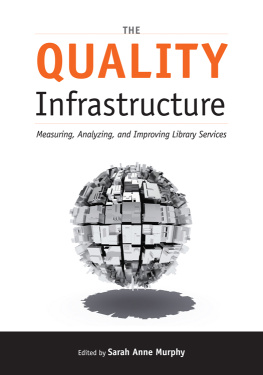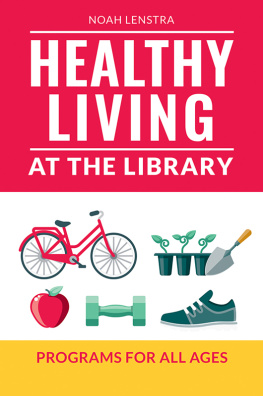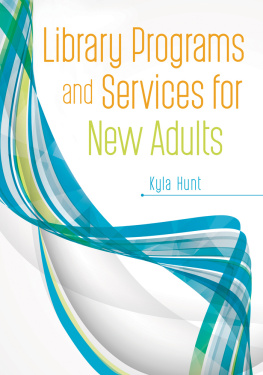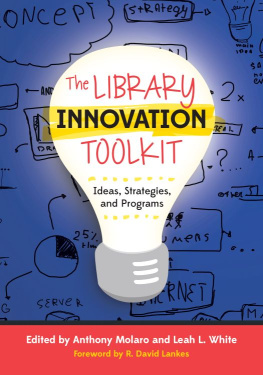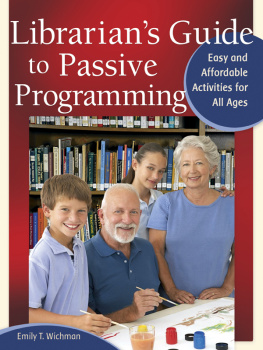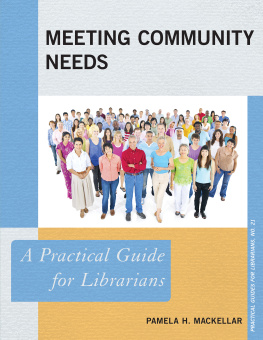
ALA Editions purchases fund advocacy, awareness, and accreditation programs for library professionals worldwide.
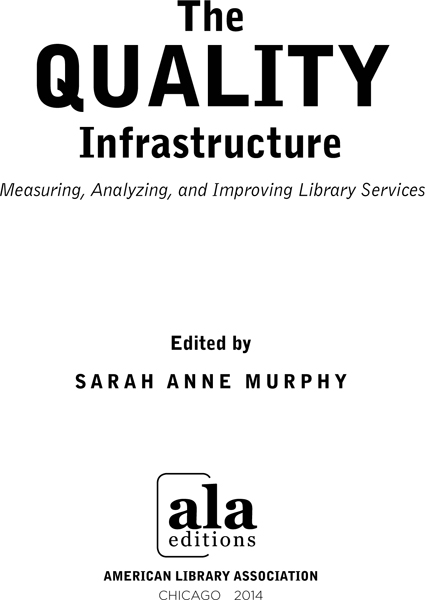
Sarah Anne Murphy has held numerous positions at the Ohio State University Libraries since 1999. She is currently coordinator of assessment there. Murphy earned an MLS degree from Kent State University in 2000 and an MBA from Ohio States Fisher College of Business in 2008. She is author of The Librarian as Information Consultant (2011), and has published papers on Lean Six Sigma, mentoring, and issues related to veterinary medicine libraries in College & Research Libraries, the Journal of Academic Librarianship, and the Journal of the Medical Library Association.
2014 by the American Library Association
Extensive effort has gone into ensuring the reliability of the information in this book; however, the publisher makes no warranty, express or implied, with respect to the material contained herein.
ISBNs: 978-0-8389-1173-0 (paper); 978-0-8389-9496-2 (PDF); 978-0-8389-9495-5 (ePub); 978-0-8389-9497-9 (Kindle). For more information on digital formats, visit the ALA Store at alastore.ala.org and select eEditions.
Library of Congress Cataloging-in-Publication Data
The quality infrastructure : measuring, analyzing, and improving library services / edited by Sarah Anne Murphy.
pages cm
Includes bibliographical references and .
ISBN 978-0-8389-1173-0
1. Academic librariesUnited StatesEvaluationCase studies. 2. Research librariesUnited StatesEvaluationCase studies. 3. Public services (Libraries)EvaluationCase studies. 4. LibrariesQuality controlCase studies. 5. Library administrationUnited StatesCase studies. 6. Library administrationCanadaCase studies. I. Murphy, Sarah Anne.
Z675.U5Q35 2014
025.5'87dc23 2013005034
Cover design by Adrianna Sutton. Image Shutterstock, Inc.
Contents
Sarah Anne Murphy
Twenty Years of Assessment at the University of Washington Libraries
Steve Hiller and Stephanie Wright
Assessment at the University of Virginia Library
Lynda S. White
Chestalene Pintozzi
Syracuse University Librarys Program Management Center
Terriruth Carrier and Nancy B. Turner
The NIST Information Services Offices Baldrige Journey
Barbara P. Silcox, Mary-Deirdre Coraggio, Susan Makar, and Mylene Ouimette
The Emory University Libraries Journey
Xuemao Wang and Emily Thornton
Dana Thomas and Kate Davis
The UC-San Diego Example
Kymberly Anne Goodson and Daniel Suchy
Laurel Ann Littrell
Lucretia McCulley
Carol Mollman
Q uality functions as a strategic competitive asset , and libraries with high-functioning quality infrastructures, defined by programs with dedicated personnel, are best positioned to demonstrate their value. This collection of essays, written by authors from a variety of backgrounds and library institutions, is dedicated to promoting the benefits of developing a quality infrastructure within a library organization. By dedicating a department, committee, or employee to assessment activities, or implementing programs such as the Baldrige Criteria for Performance Excellence, Lean Six Sigma, or the Balanced Scorecard, these libraries have realized sustainable change. The contributors to this volume show that it is possible to establish a programmatic approach to measuring, analyzing, and improving library services whether a library serves a large research-intensive university, a small liberal arts college, or is itself a special library. Such discipline not only improves the value of library services, but aids a library or library organization in communicating its value to the individuals it serves.
Our hope is to expand librarians conversations on assessment beyond specific tools to measure customer perceptions of service quality, learning outcomes, and website usability. While knowledge and application of such tools is necessary to develop an understanding of library customers needs and a librarys success at satisfying these needs, these tools, used in isolation, cannot effect sustainable change. A library can only continuously improve and effectively respond to the needs of the individuals it serves by dedicating the human, financial, and capital resources required to support effective assessment.
These resources are the foundation for any library assessment program. Regardless of whether a library refers to its efforts to understand the effectiveness of its services and programs as assessment, quality improvement, impact evaluation, or evidence-based librarianship, a library with an effective quality infrastructure must invest in the personnel supporting these programs, and provide the equipment and finances necessary to do their work. Further, personnel in such programs ideally follow a process or model for structuring their work. Lean Six Sigma and the Baldrige Criteria, for example, offer a framework that aids an organizations efforts to consistently seek improvement. By working through Lean Six Sigmas Define-Measure-Analyze-Improve-Control (DMAIC) model, or the Baldrige Criterias structured questions, a library may efficiently gather information regarding a problem or situation and take effective action. Consciously following such processes prevents library employees from skipping important steps in the improvement process, such as failing to truly consider the voice of the customer or understand the root cause of an issue. Further, by using these processes, or tools such as the Balanced Scorecard, library employees are better positioned to effectively work together and communicate their progress to others.
While the implementation of formal assessment or quality infrastructures in libraries is evolving, a variety of approaches are relevant, depending on the size of the institution the library supports, and factors such as the library and the institutions culture. Further, many libraries may have already consciously or unconsciously adopted elements of established quality infrastructures or programs. A recent survey of 536 academic libraries employing more than ten professional librarians and having a Carnegie Foundation Basic Classification of Masters/S or above, for instance, revealed that just five of 158 responding libraries (3.1 percent) utilized Lean Six Sigma or another established quality improvement program to structure or organize their librarys assessment program.a budget to support their assessment or quality improvement activities. Only half (n = 83, 52.5 percent) noted their library had staff specifically assigned to coordinate their librarys assessment or quality improvement program.
Without devoting a budget or staff to programmatically measuring, analyzing, and improving library services, libraries will continue to struggle to sustain assessment efforts and consistently demonstrate their value. The contributors to this book were tasked to share how a systematic quality or assessment program was established within their library organization, detail the roles established for individuals participating in the program, discuss recent activities or projects, and indicate how their program has affected sustainable change within their organization as evidenced by continuous learning and improvement.
The evolution of the well-respected assessment program at the University of Washington Libraries is outlined by Steve Hiller and Stephanie Wright in . The program was established with a task force appointed to study the needs of the libraries users and the success of the libraries in satisfying these needs in 1991, and activities are now directed by an Office of Assessment and Planning, which diligently works to link assessment with the libraries strategic planning initiatives using the Balanced Scorecard framework. The office is staffed by a director who serves as an internal consultant for assessment activities conducted by library staff, and a part-time management information librarian, who assists the director in developing, implementing, and managing the program. Two standing committees, the Strategic Planning Action Team and the Libraries Assessment and Metrics Team, support the activities of the office, helping to develop outcomes and success metrics, and making data and other key information available to staff and the public. Ongoing projects include the Triennial and In-Library Use surveys which provide longitudinal information detailing how students and faculty use the libraries and their information needs and priorities. Usability and other qualitative assessment methods are also conducted, and e-metrics focused on electronic resource usage and costs are collected.
Next page
